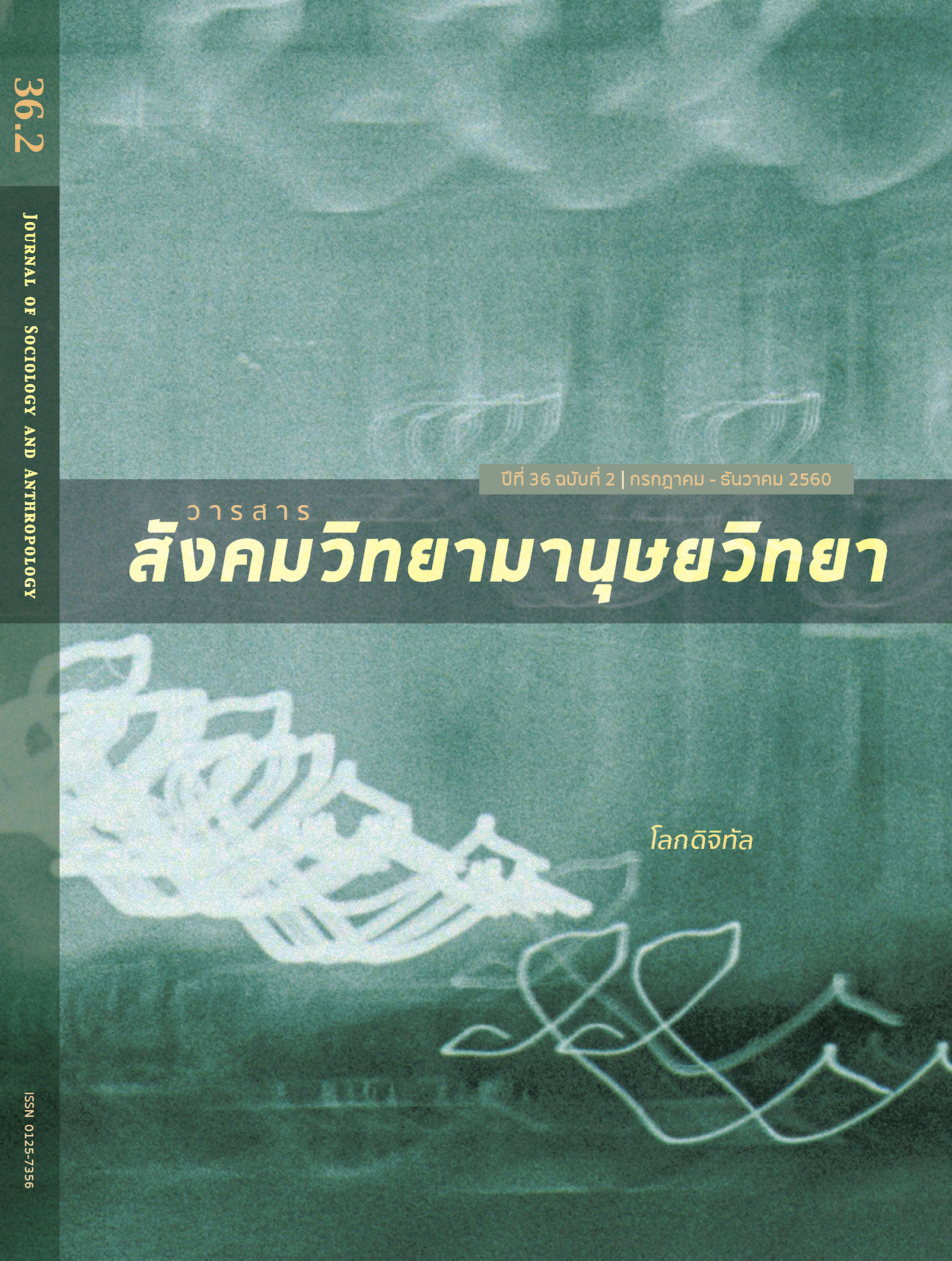Rumors on Twitter: Flows of News and Information under Thailand’s Socio-political Transition
Keywords:
rumors, social media, twitter, the 2014 coup d’étatAbstract
This article discusses online rumors under the ongoing socio-political transition in Thailand. Based on a data set of rumor messages on Twitter during the two-year period since the 2014 coup d’état, the article points out how the flows of online rumors illustrate the lack of freedom among both mainstream and alternative media, and their limit in news reporting of certain public issues. Most of the rumors originate from random individuals’ Twitter accounts, but which are quickly and widely disseminated through public figures’ or online influencers’ accounts. The circulation cycle of such rumors varies according to the verification and following confirmations or rebuttals of each rumor message. With digital media technologies, however, online rumors may persist and regain future public attention. Therefore, it is essential to maintain the balance of power between different peer groups to encourage more alternatives to rumors in the flows of information.
References
ชวรัตน์ เชิดชัย. 2527. การสื่อสารและสาธารณมติ. กรุงเทพฯ: คณะวารสารศาสตร์และสื่อสารมวลชน มหาวิทยาลัยธรรมศาสตร์.
พิจิตรา สึคาโมโต้ และ พีรพล เวทีกูล. 2560. “ข่าวลือท่ามกลางวิกฤตการณ์การเมืองในสื่อใหม่: กรณีศึกษาทวิตเตอร์ในวิกฤตการณ์การเมืองปี 2557.” (รายงานการวิจัย). กรุงเทพฯ: สำนักงานกองทุนสนับสนุนการวิจัย. (เอกสารอยู่ระหว่างจัดทำ).
เอกสารภาษาอังกฤษ
Ahern, Kenneth R., and Denis Sosyura. 2015. “Rumor Has It: Sensationalism in Finanical Media.” The Review of Financial Studies 28(7): 2050–2093.
boyd, danah* and Kate Crawford. 2012. “Critical Questions for Big Data: Provocations for a cultural, technological, and scholarly phenomenon.” Information, Communication & Society 15(5): 662-679.
Berinsky, Adam J. 2017. “Rumors and Health Care Reform: Experiments in Political Misinformation.” British Journal of Political Science. 47(2): 241-262.
Burrows, Roger and Mike Savage. 2014. “After the Crisis? Big data and the methodological challenges of empirical sociology.” Big Data & Society 1(1): 1-6.
DiFonzo, Nicholas, Prashant Bordia, and Ralph L. Rosnow. 1994. “Reining in Rumors.” Organizational Dynamics 23: 47-62.
Hovland, Carl I., Irving L. Janis, and Harold H. Kelley. 1953. Communication and Persuasion : psychological studies of opinion change. New Haven: Yale University Press.
Huang, Haifeng. 2015. "A War of (Mis)Information: The political effects of rumor and rebuttals in an authoritarian country." British Journal of Political Science 47(2): 283-311.
Pruskus, Valdas. 2009. “Purpose and Vitaltity of Rumours: Political aspects.” Coactivity: Philosophy, communication 17(1): 29-40.
Wathen, C. Nadine and Jacquelyn Burkell. 2001. Believe It or Not: Factors influencing credibility on the web. Journal of the American Society for Information Science and Technology, 53(2): 134-144.
* สะกดด้วยอักษรตัวพิมพ์เล็กตามการสะกดชื่อและนามสกุลอย่างเป็นทางการของผู้เขียน
เอกสารออนไลน์
สำนักยุทธศาสตร์ สำนักงานพัฒนาธุรกรรมทางอิเล็กทรอนิกส์ (องค์การมหาชน) กระทรวงดิจิทัลเพื่อเศรษฐกิจและสังคม. 2560. รายงานผลการสำรวจพฤติกรรมผู้ใช้อินเทอร์เน็ตในประเทศไทย ปี 2560. กรุงเทพมหานคร: สำนักงานพัฒนาธุรกรรมทางอิเล็กทรอนิกส์ (องค์การมหาชน). สืบค้นเมื่อ 5 ตุลาคม 2560. https://www.etda.or.th/publishing-detail/thailand-internet-user-profile-2017.html.
Kwon, Sejeong, Meeyoung Cha, Kyomin Jung, Wei Chen, and Cajun Wang. 2013. “Prominent Features of Rumor Propagation in Online Social Media.” In IEEE 13th International Conference on Data Mining, edited by Hui Xiong, George Karypis, Bhavani Thuraisingham, Diane Cook, and Xindong Wu, 1103 - 1108. Los Alamitos, CA: IEEE Computer Society. Accessed October 5, 2017. doi:10.1109/ICDM.2013.61
Zubiaga Arkaitz, Maria Liakata, Rob Procter, Geraldine Wong Sak Hoi, and Peter Tolmie. 2016 “Analysing How People Orient to and Spread Rumours in Social Media by Looking at Conversational Threads.” PLoS ONE 11(3): e0150989. https://doi.org/10.1371/journal.pone.0150989


